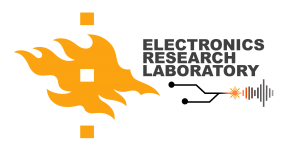Physical Measurement Methods
Page updated 24.09.2019
Measurement Methods in Physics (FYS2007), 5 ECTS, autumn 2019
Lecturer: Prof. Edward Hæggström, edward.haeggstrom (at) helsinki.fi
Assistants: B.Sc. Jere Hyvönen, jere.hyvonen (at) helsinki.fi Joonas Mustonen, joonas.mustonen (at) helsinki.fi Petri Lassila, petri.lassila (at) helsinki.fi
Your questions will be answered by Jere Hyvönen.
Current Affairs
Nothing to announce
Final Exam
Exam 22.10 from 09-13
Proving ground: Lectures and exercises.
Course evaluation: 1/3 of the course grade consists of exercise points. Every week, 3 exercises are returned, or at least a blank piece of paper with the student’s name and student number. During exercise sessions, the tasks on the other two exercise tasks are listed.
Scoring: 3 points / return problem, 1 point or 2 points / whiteboard. Presenting the correct solution gives you 3 points, and defective solution gives you 1 point. You will need to get 50% of the exercise points or return 10 completely correctly calculated recovery tasks in order to take the final exam. Return to the 2nd floor compartment (in the Learning Lab lobby) by 4pm on the previous Friday at the latest or by email. If the student fails to return the assignment (even the blank paper) 2 times, his / her right to take the course exam will be forfeited. The rest of the grade is determined by test points.
Content of the course:
Duration: Lectures 11.9.2019 – 18.10.2019
Time in the study timing model: 2nd year Prerequisites: Basic physics studies (25 ECTS), especially electromagnetism and electro-dynamics Content: The course covers basic measuring instruments, measurement systems, various sources of error and error handling of results. The course is a compulsory course in subject studies. The course information can be used in subject studies in laboratory work.
Requirements: Exercises and final exam
Literature:
M. Sayer, A. Mansingh: Measurement, Instrumentation and Experimental Design in Physics and Engineering, Prentice Hall Of India 2005 (course book).
J. P. Bentley: Principles of Measurement Systems, Pearson Prentice Hall; 4th edition (January 2005). The lectures can be supported by eg. books by Aaltonen, Kousa, Stor-Pellinen: Basics of Electronics, latest edition, Limes ry. K. Silvonen, Electronics and Semiconductor Components, Otatieto 2009.
Related Links
Verkkosivuja, joista löytyy mukavasti tietoa elektroniikasta:
HyperPhysics on Georgia State Universityn ylläpitämä fysiikan, kemian ja matematiikan
sivusto, joka sisältää myös elektroniikan esimerkkejä.
Kanavatransistorit
Datasheets: 2n4416 Vishay , Calogic
Operaatiovahvistimet
Filter Design in Thirty Seconds (Texas Instruments)
Digitaalielektroniikka
Digital vs Analog (How Stuff
Works)
Logic Selection Guides (Texas Instruments)
ASIC World Directory – Digital
(K-Maps, Quine-McCluskey minimization)
555 ajastinpiiriin liittyen
Switch capacitor kytkentöjä
Switched Capacitor Filter Solutions
Basic Introduction FIlters – Active, Passive, and Switched-Capacitor
AD- ja DA-muuntimet
Analog to digital converter (Wikipedia)
Muita linkkejä
Lecture times
Exercises
Exercises 3 | Solutions 3 | bode_plot_koodi
Electronic reset: jere.hyvonen (at) helsinki.fi under the heading “Fymitt exercise x”, where x is the exercise number. It is recommended to use the book Aaltonen, Kousa, Stor-Pellinen: Introduction to Electronics, latest edition, Limes ry.
Exercise Groups
Tue 16.15-18.00, D106, Jere Hyvönen
Wed 12.15-14.00, D104, Joonas Mustonen
Thurs 14.15-16.00, D106, Petri Lassila
Fri 14.15-16.00, D106, Petri Lassila
